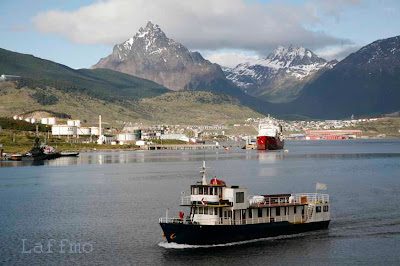“Some years ago – never mind how long precisely – having little or no money in my purse, and nothing particular to interest me on shore, I thought I would sail about a little and see the watery part of the world.”
Ishmael – Moby Dick, H. Melville.
It is not, to the best of my knowledge, possible to teleport to Antarctica. For some people, this is a great pity, especially for those who must traverse the notorious Drake's Passage without having acquired the sea legs to do so.
At the time of writing, I am not sure if we are still on your map or not, but Drake's Passage – so named after alleged bowling enthusiast and sometime Dragon of the British Empire, Sir Francis Drake – is an unforgiving place for greenhorns whose bellies are prone to sickness of the churning sea.
The passage is that stretch that lies between the languid, Sistine efforts of South America and the Antarctic Peninsula to meet. Between them, unimpeded by any significant landmass, winds that hurtle around the White Continent are funnelled and amplified. The result is the fury of Drake's Passage, which is constantly choppy, occasionally deadly, and always causes a great number of folk – predominantly, though not exclusively, women – to become very unwell indeed.
However, through a combination of drugs and our steely determination to think well, we have not yet succumbed to Neptune's nausea. As I have mentioned, others were not so lucky; some barely lasted a few hours in the open ocean before they were emptying themselves around the place. A bum deal, especially as the conditions are considered to be excellent (though by no means calm) and that, even with the favourable winds, the crossing takes more than 48 hours.
Even without the sickness, I'm hard pushed to say that it's particularly pleasant to be rocking around in endless sea for two and a half days. There's a novelty of trying not to accidentally glass someone when collecting orange juice in the restaurant in the morning; similarly it can be fun to walk up stairs and feel your self gain/lose half your body weight in pressure, depending on what way the boat is a-rocking. But all wears off before too long – simple things become difficult and anything involving dexterity is on a complete hiatus.
All of this, though, seemed like a far-off impossibility on leaving Ushuaia. The passage through the Beagle Channel had been positively serene, with the most tumultuous liquid being the copious amount of wine splashing quickly in and out of glasses as the great, the successful and the lucky proposed toasts to themselves over an excellent dinner.
At around 4am, many of them – myself included – were introduced with a jolt to Drake's Passage and since then, things have been a great deal more subdued.
As we had expected, those on board are an astonishingly eclectic mix. Each dinner time brings a slightly awkward school dance mentality, where people are afraid to pick a table of strangers, and shy, and worried about if the boys fancy them, or if the girls have noticed their preposterously-gelled hair, before they take a deep breath, sip some wine, and begin to distil their lives into a neat series of anecdotes. The international pot pourri has so far included a Thai banker who speaks the plummiest of plummy English, an obscenely self-confident French film maker, an Italian chemist (which may or may not mean more than just that), an affable Canadian mechanic, a Swiss couple who spent 42 days on a boat with their camper van as they exported it to Argentina, allowing them to drive it around the continent for six months, and a wee Buddy fae Paisley who arrived via 40 years in Toronto. We've not started looking for interviewees yet, but it seems unlikely we'll be short of candidates.
Away from these meals – three courses for lunch, three for dinner and my own gluttony to cope with at breakfast – there are lectures from likeable, knowledgeable staff who teach us about penguins and seals and pelagic sea birds and whales and all the other critters we might bump into in the following week. They give us a stern, sombre talk about how to behave on the continent too.
Unexpectedly, the sea bird lecture is particularly excellent, partly because it teaches us the most about a subject that we knew the least, and because we could then immediately get out onto the deck and attempt the ungainly process of trying to capture the beasts on film. It's not an easy business – like clay pigeon shooting with frozen hands on a moving platform, where the pigeon can change direction at a whim.
 |
| Photo: Wee Mo |
The lecture was also good in part because of the lecturer, Rodrigo 1 (there is a Rodrigo 2, and possibly a 3, but I didn't meet him), who whether he means it or not, is prone to profundity and has a wonderful turn of phrase. For example:
“One of the images of Antarctica that first comes to mind, as well as the cold, the sheer isolation, is that of the penguin.”
And when talking about the blue flash behind the eye of the Adelie penguin: “They look like mad men, staring at you intently, trying to warn you about some mortal danger.”
And on spotting a solitary king penguin far out of its territory last winter: “It speaks about life's ability to survive and endure, this the only black speck in miles of white vastness.”




